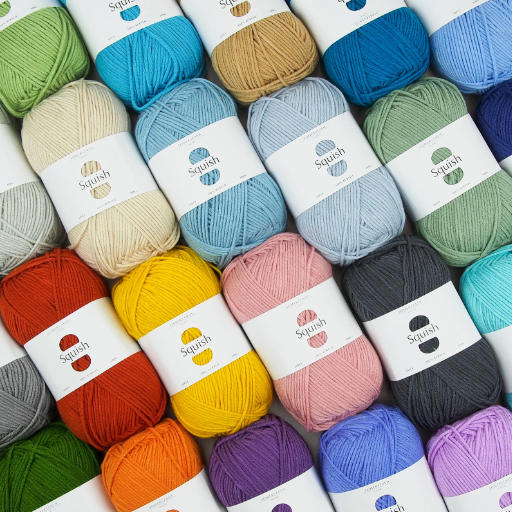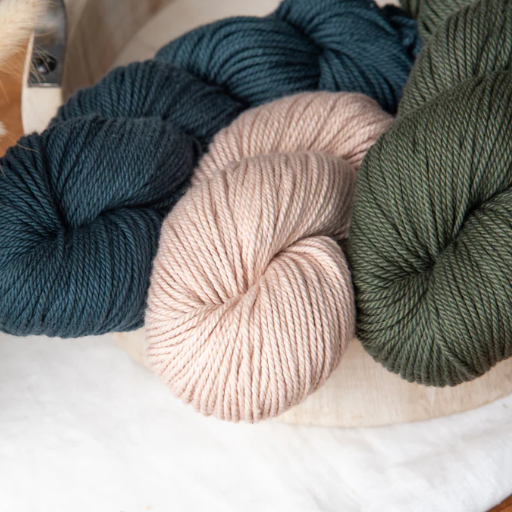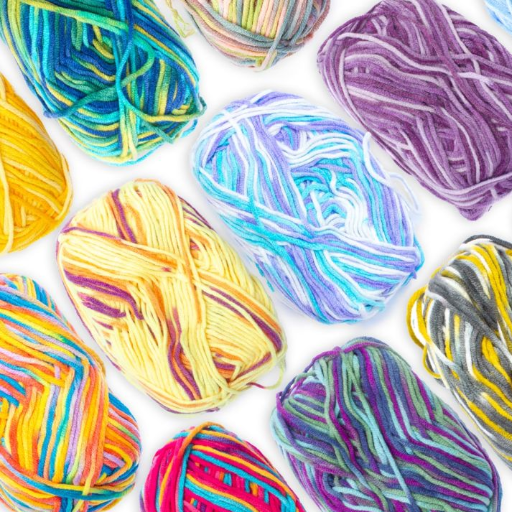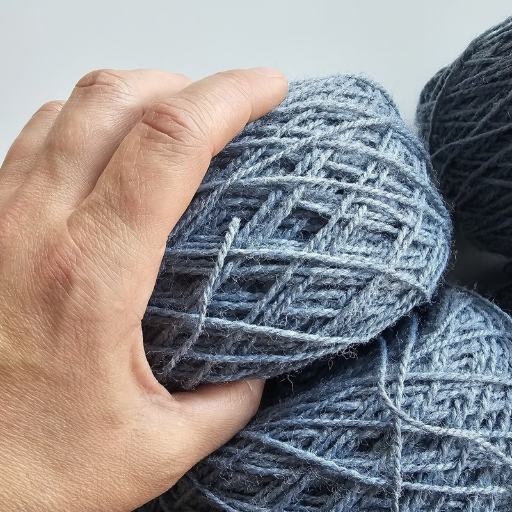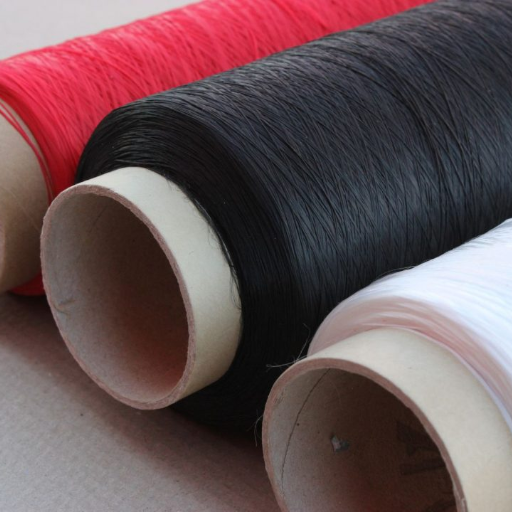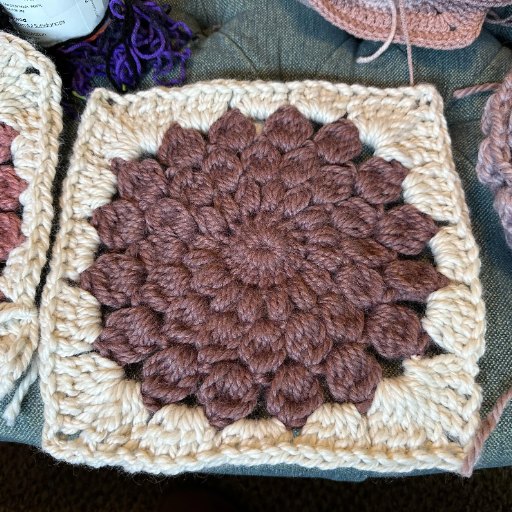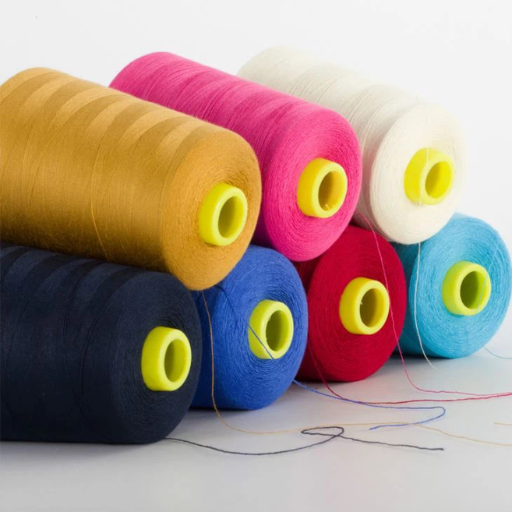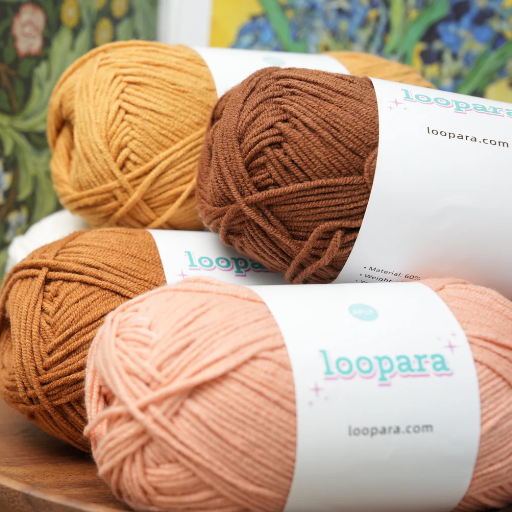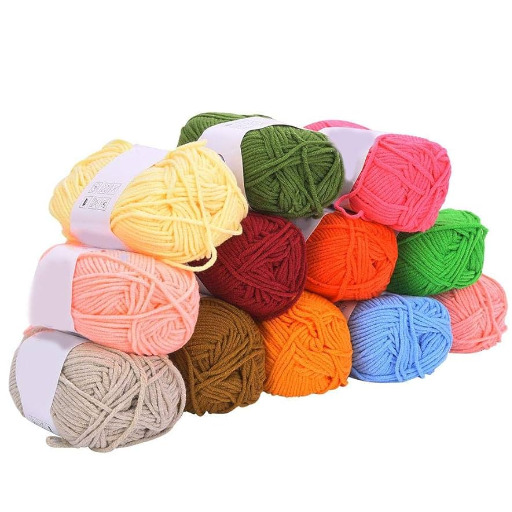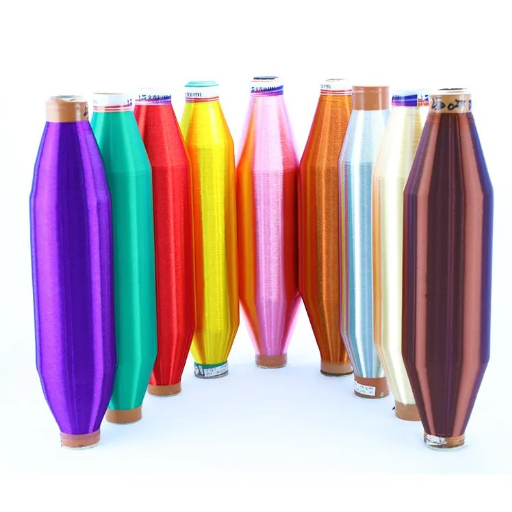Acrylic yarn is extensively used in the craft and textile industries but its makeup and features are different from other types of yarn. This article aims to describe the materials used to make acrylic yarn its fictive nature and the processes involved in ‘branding’ it. Moreover, we will analyze distinctions among synthetic yarns such as acrylic and their organic counterparts like wool and cotton about their merits, demerits, as well as their practicality. At the end of this blog, you will be able to distinguish between synthetic and natural yarns, which will enable you to make suitable choices depending on your crafting or production requirements.
How Is Yarn Made?

As with any product, the making of yarn differs by type but generally follows a broad outline. The first stage of manufacturing acrylic yarn, for instance, begins with the polymerization of acrylonitrile, which is a petrochemical compound. It produces a plastic-like substance that is melted and extruded through spinnerets, forming long continuous fibers. These fibers are then drawn, crimped, and cut to staple lengths.
On the other hand, natural yarns are produced through plants and animals such as wool, cotton, and silk. Wool is gathered by shearing sheep, whereas cotton is picked from the cotton plant’s bolls. These raw materials are cleaned, carded, and spun into yarn, which is formed when loose fibers are turned into strands, whether by hand or machinery.
Dyeing and finishing treatments may be applied to both synthetic and natural yarns to improve their color and texture for many uses. The differences lie in the raw materials and their means of fiber production although the processes are fairly similar.
Understanding Acrylic Fiber Production
Acrylonitrile is the primary raw material for the manufacture of acrylic fibers which contains about 85 percent of the useful component. First step involves polymerisation which is done by suspension or solution polymerisation. Polyacrylonitrile is produced in the form of viscous plastic solution which is then prepared for fiber formation.
During wet spinning, the solution is extruded through spinnerets into a coagulation bath. Evaporation in dry spinning creates fine filaments. These filaments are then drawn or stretched to improve molecular orientation, increase tensile strength, and improve elasticity. In order to enhance the texture and bulk of the fiber, crimping is often applied. Subsequently, fibers are processed and cut into the necessary staple lengths for yarn or fabric.
For softening, pilling resistance and dye retention, acrylic fibers are treated with other finishes. Highly resistant to UV radiation and light, pilling-resistant acrylic textiles are widely used in clothing, industrial textile cloths, and upholstery fabrics.
Process of Spinning Synthetic Yarn
It is easily understood that gaining fibers need control at every stage right down to spinning which involves synthetic yarn production. Yields start with the accumulating of polymers from oil-based chemicals, polyamide, and even polyester materials, which together form a viscous substrate. The polymeric solution is unclogged from particulate so that it can be spun without any barriers or disruptions.
The spinning stage has three major categories: melt spinning, wet spinning, and dry spinning, each chosen depending on the thermal and chemical nature of the polymer. Within the chambers of melt spinning, the heated-up polymer that is still in liquid state is pushed through heating plates into a cooling chamber, where cooling down solidifies the filaments. Wet spinning refers to extruding the polymeric solution into a chemical coagulation bath, where the filaments begin to precipitate out of the solution. Lastly, dry spinning relies on the pressure chamber combined with a heating one, where the substrate is covered in a solvent that subsequently evaporates.
Post-extrusion, the filament undergoes drawing or stretching to orient polymer chains parallel to the fiber axis, thereby increasing mechanical strength and elasticity. Additional texturizing operations, such as crimping, may then be employed to improve resilience, softness, and bulkiness of the yarn. Lastly, the synthetic yarn is cut into specified lengths and subjected to chemical finishes to improve performance characteristics, such as ultraviolet light resistance, dyeability, and anti-pilling. These specialized yarns are used in a wide variety of applications from clothing and furnishings to geotextiles.
Comparing Natural Fibers to Synthetic
Fabrics obtained from plants or animals, particularly cotton, silk, and wool, are renowned for breathability, biodegradability, and renewability. They happen to be comfortable to wear since they are soft and possess moisture-wicking abilities. On the downside, traditional fibers demand a great deal of agricultural goods such as water, land, and chemicals, which do have an adverse impact. Furthermore, their resistance to elements like sunlight and moisture is less as compared to synthetics, and often, they are more sensitive to wear and tear.
Fibers such as nylon and acrylic as well as polyester are considered to be synthetic because they are made through petrochemicals. Synthetics are built to be durable, elastic, and resistant to changes in conditions, like shrinking, so they are perfect for tough and demanding environments. Although they are more economical when it comes to maintenance and production, the need for non-renewable sources and the limited ability to biodegrade pose a problem. Synthetics capture excessive moisture and heat, consequently hindering comfort for many applications.
The use and performance traits required primarily dictates the gap between natural and synthetic fibers. Traditional fibers are more suitable for the applications focusing on comfort and sustainability while technical and high performance settings due to the unmatched versatility and resilience of synthetic fibers.
What Are the Pros and Cons of Acrylic Yarn?

Advantages of Acrylic Yarn
Acrylic yarn is one of the most durable yarn types of all time. It is light in weight, resistant to fading, and very cost-effective compared to natural fiber. It is perfect for projects that require long-lasting results. In addition, acrylic yarns come in a variety of colors and textures and are very easy to wash. Its practicability is furthermore increased as it is highly resistant to moths and mildew. Also, from a practical point of view, it is easier to maintain.
Disadvantages of Acrylic Yarn
Although acrylic yarn serves its purpose well, it lacks the breathability of natural fibers, leading it to retain too much heat and moisture, which limits comfort. Additionally, as time goes by, the quality and appearance of the goods fades due to static and pilling. From an ecological view, the most worrying downside of this synthetic fiber which is derived from petrochemicals is that it is not biodegradable. Moreover, acrylic yarns are often less soft than other types of natural fibers such as wool and cotton.
Benefits of Using Acrylic for Crafters
Acrylic yarn is an excellent choice for crafters and hobbyists for a myriad of reasons. It is inexpensive, making it ideal for beginners and larger projects. The yarn is lightweight but strong and is permanently set in its shape. It also comes in a wide selection of vibrant colors. Because acrylic yarn is machine washable and quick drying, it is easy to clean and incredibly useful for making blankets, scarves, or even hats. In addition, the crafted items’ resistance to mildew, moths, and fading from UV light ensures the crafted items have a longer life; this guarantees their usefulness indoors and outdoors. Although it is made from a synthetic polymer, acrylic yarn still manages to provide reasonable variation in texture and weight for the various patterns and styles.
Disadvantages of Many Acrylic Yarns
Acrylic yarn is quite popular among crafters, however, it is worth noting that there are some serious limitations associated with this type of yarn surpassing its benefits. Its affordability is indeed crucial, but knitwear made from acrylic pillars can feel rough on the skin as it does not have the softness of cotton or wool. Furthermore, knitwear crafted from acrylic yarn possesses very low breathability in hot climates. Moreover, its sustainability is questionable as knitwear made from acrylic yarn tends to pill, snag, or lose its appearance after washing. In addition, crafters should consider the flammability of this type of yarn. It is much more dangerous compared to natural fibers as it does not incur the self-extinguishing properties found in natural materials. Finally, microplastic pollution is a direct consequence of acrylic yarn not being biodegradable which creates an environmental issue that sets contemplative crafters in a dilemma.
Comparing Acrylic Yarn to Wool
Acrylic yarn and wool differ considerably in their characteristics, applications, and pro-environmental sustainability, which is why they stand out. As a natural material, wool is a fiber that is highly valued for its elasticity, warmth, and breathability. Because of its ability to wick moisture very well, it is perfect for cold-weather clothing and accessories. On the other hand, acrylic yarn, which is a synthetic fiber, is sought after because of its low cost and durability, which makes it easier to mass-produce and is also machine washable.
Acrylic lacks the softness and the natural insulating qualities of wool which makes it very uncomfortable in hot regions. The other difference is in durability; under good care, wool garments can last long and are less susceptible to wearing, while acrylic garments are easily affected by pilling, roughening, snagging and fading.
Because the factors mentioned above regarding their use and impact differ, the two types of fibers further diverge in environmental factors. Wool, as a renewable material, is biodegradable, thus having significantly less ecological impact than acrylic yarn, which is non-biodegradable and adds to microplastic pollution. Although the sustainability issues surrounding wool production such as land use and animal welfare are prominent, it still offers more value in its wool form. Finally, the severity of the budget, how the garment will be used, and pro-environmental sustainability are the main determinants of whether to use one type of fiber over the other.
Is Acrylic Yarn Bad for the Environment?

Acrylic is incredibly disruptive ecologically. As a synthetic, petroleum fiber, its production is dependent on non-renewable resources while consuming a large quantity of energy. In addition to this, acrylic is also non-biodegradable, meaning it will stay in the environment for a long period. One of the most alarming features is its microplastic pollution. This is because acrylic sheds microplastic fibers during its use and washing which gets into streams and ecosystems. Although acrylic is cheap and multifunctional, the environmental impacts it causes make it unsustainable when put side by side with natural fibers such as wool.
The Environmental Impact of Acrylic
The fossil fuel origin of acrylic, alongside its non-biodegradable characteristics, poses great concerns about acrylic. Acrylic is both energy-intensive and polluting, as it emits VOCs and other harmful chemicals during its production. An even greater concern is microplastic pollution, as acrylic disintegrates into fine fibers during washing which contaminates water bodies and damages aquatic life. Furthermore, its non-biodegradable nature means that it remains in landfills for hundreds of years, further accelerating environmental degradation. Despite being lightweight, inexpensive, and useful for an array of purposes, synthetic fibers are less ecological than natural fibers due to their weighty environmental cost.
Issues with Microplastics in Yarns
There are pollutants caused by yarn-based products like acrylic fibers, but the washing technique used is the primary source. During washing, microfibers shed from acrylic yarns get released into wastewater systems and are not effectively filtered by washing treatment systems. These microplastics eventually end up in oceans or other water bodies which means they are accessible to absorb. Because the particles are non-biodegradable, this also means these pollutants persist in the environment for decades making it dangerous for aquatic ecosystems. Ingesting microplastics is quite common amongst marine organisms. This leads to bioaccumulation, and eventually subsequentially impacts humans. Furthermore, there is evidence that suggests the existence of these fibrous synthetics is water pollution even before the consumer has a chance to use them. To lessen the severity of the issue, consumers can change their habits and incorporate clothes made from natural fibers, or use washing bags intended to capture fibers. It will also be beneficial to push for more innovation in textile filtering technologies.
Transition to Plastic-Free Yarn
The use of natural plastic-free yarns, typically crafted from cotton, wool, silk or hemp, is a potential solution to curbing the issue of microplastic pollution. These materials are natural options in contrast to acrylic and other synthetic yarns. They are comprised of biodegradable materials which break down more effectively and lessens harm to the environment. When opting for plastic-free yarn, eco-friendly manufacturing processes are equally encouraged. It also helps to curb the consumption of petroleum-based materials.
To locate plastic-free products, consumers need to read labels carefully while focusing on those that indicate 100% natural or organic fibers. Further, certifications like GOTS (Global Organic Textile Standard) or OEKO-TEX enable one to guarantee ethical and eco-friendly production. The inclusion of natural yarns in knitting and clothing manufacturing helps to address the ecological impact of textiles and enhance the health of the ecosystem by preventing the emission of nonbiodegradable particles. The promotion of innovation, stricter policies, and awareness regarding material selection are crucial for the creation of a sustainable future within the textile industry.
Should You Use Acrylic Yarn or Wool?

Balancing purpose, environmental concerns, and user preference is key in distinguishing between wool and acrylic yarn. In comparison to traditional options, acrylic yarn is more lightweight, stronger, and easily available. It certainly is cheaper than wool, however, it has many negative trade-offs such as being nonbiodegradable and contributing to pollution as it is derived from petroleum-based sources. While it is renewable and biodegradable, wool on the other hand is a natural fiber that offers excellent warmth, breathability, and elasticity. Its downside is that it needs special care and tends to cost a bit more. However, for ethical and certified suppliers, wool is the best choice when it comes to environment-friendly crafting or production.
Understanding Wool Pros and Cons
The wool comes from sheep and other animals, and like all fibers, it has its specific benefits. Its thermal properties are outstanding, which makes it perfect for use in cold and varied weather conditions. Besides, wool is super absorbent and can efficiently regulate the temperature of the body while moving moisture outward from the body. The elasticity of wool allows garments to keep their shapes over time, and the fiber’s durability ensures it can be used for long periods. Lastly, from an environmental point of view, biodegradable wool is preferable over its synthetic counterparts.
Unfortunately, worsened absorbency means that washing garments made from wool needs special consideration, considering that inappropriate washing can cause the wool to shrink. Wool, especially coarser ones, can also irritate the skin or cause allergic reactions in some people. Besides, the ethical standards and tedious processes involved in manufacturing woolen garments make them relatively high priced. But for a consumer concerned about the environment, wool sourced from trusted ethical producers is an excellent option since it satisfies performance, sustainability, and quality. Ultimately, selecting the right material all comes down to a person’s specific goals and preferences.
Choosing Between Acrylic vs Wool
The decision between acrylic and wool requires an analysis of performance, expenses, maintenance, and environmental impact. Wool is a natural fiber that claims some merit in breathability, insulation, and moisture-wicking. It works great for cold weather since it keeps one warm without overheating. In comparison, moth-resistant acrylic is lightweight and cheaper than wool, making it the ideal option for those allergic to wool.
This area centers around maintenance. Wool is relatively more delicate and requires hand washing along with special detergents to avoid shrinkage, damage to the fibers, or any degradation. However, acrylic is more convenient since it’s machine-washable and dries off quickly. But in comparison to acrylic, wool is much more eco-friendly due to being biodegradable. While acrylic contributes to microplastic pollution and is not sustainable, it is, however, more eco-friendly.
For nature-loving consumers willing to sacrifice ease of care and extra spending, wool proves to be ideal. Acrylic, on the other hand, is perfect for low-maintenance everyday use and cost-centric individuals. Personal preferences and requirements of the consumer will ultimately determine what the best material is by weighing the above-mentioned trade-offs.
Considering Wool Allergy Concerns
Allergic reactions to wool are experienced by some people and range from skin problems like rashes, redness, or itching, in addition to inflammation. The main culprits for this reaction are the wool fibers which have a coarse texture that may trigger skin problems like dermatitis, as well as sensitive skin. Allergic reactions can also take place with lanolin, an organic component present in wool, for some individuals.
For those worried about these problems, acrylic and other synthetic fibers are very practical as they reduce the risk of allergies. Unlike wool, acrylic fibers are hypoallergenic and devoid of lanolin, in addition to being silky which reduces skin irritations. Allergy-allowing individuals can also opt for processed or blended wool, synthetic, or treated garments designed to have minimum triggers. To conclude, the theoretically proposed alternative fabrics or allowing treated products will aid in minimizing the overall problem.
What Are the Differences Between Acrylic Yarn and Wool?

Acrylic yarn and wool have a major difference in their makeup, attributes, and performance. The wool comes from the fleece of sheep. It is a fiber that is very well-known for its insulation, breathability, and moisture-absorbing capacity. It gives comfort and warmth which makes it great for cold weather, but it is pricey and can annoy sensitive skin because of its lanolin content. In comparison to wool, acrylic yarn is made out of synthetic polymers, which are specifically created to be lightweight, strong, and do not trigger allergies. Moreover, its use mimics that of wool. Acrylic is typically cheaper and effortless to clean since it is machine washable and does not shrink. Accompanied by all these benefits, it does not provide the insulation that wool possesses and most likely will not be able to breathe as well which leads to difficulty in temperature control. Every material has its strong points and shortcomings so the decision of which one to go for lies in the particular requirements and likes of the user.
Exploring Types of Wool
Wool is a diverse natural fiber with distinct types, each offering unique properties that cater to different needs and uses. The most common types include Merino, Cashmere, and Alpaca wool.
- Merino Wool
Merino wool is derived from Merino sheep and is prized for its superfine, soft texture, making it ideal for garments worn close to the skin. It is exceptionally breathable and offers excellent moisture-wicking properties, providing thermal regulation in both warm and cold environments. It is also naturally odor-resistant, making it popular for outdoor activities and activewear.
- Cashmere Wool
Cashmere originates from the undercoat of Cashmere goats and is renowned for its luxurious softness and lightweight structure. It provides superior insulation compared to traditional wool, despite being much lighter. However, its production is labor-intensive, contributing to its high cost. Cashmere is commonly used in high-end sweaters, scarves, and winter wear.
- Alpaca Wool
Sourced from the Alpaca, this wool is durable, hypoallergenic, and naturally water-resistant. Alpaca wool has a silky texture and provides excellent warmth with minimal weight. Additionally, it is less prickly than traditional sheep wool due to its smoother fibers. It is often used for outerwear, blankets, and accessories.
Each type of wool offers specific advantages depending on the application, with considerations like cost, softness, warmth, and durability influencing the choice. Understanding these differences ensures users select the wool type that best aligns with their requirements.
How Acrylic Yarn and Wool Feel and Work
Both wool and acrylic yarn have their unique properties which determine their relative comfort and how they can be used. Acrylic yarn is a synthetic fiber that has a soft and fluffy texture but is mandatory lighter. This is due to the miracle weight overheating in its thawing state. Moreover, it is cheaply available which makes it advantageous to crafty people. In addition, the threads are machine washable, do not shrink, and come in a variety of colors because of the dyes. For a downside, the product is stifling and less elastic than wool, which greatly reduces breathability.
Wool is a naturally occurring fiber that is highly valued because of its comfort, warmth, and breathable qualities. The elasticity of wool helps it stretch out without damage, giving it significant durability. Moreover, wool is moisture-wicking, which makes it ideal for cold-weather garments since the woolen clothes keep the wearer warm even when damp. One drawback of wool is that it requires careful washings, as it shrinks or felts when exposed to battle. There are also significant differences in how wool can feel, depending on how fine the fibers are. Finer wool like Merino feels soft, while course wool can be quite scratchy. Generally, the selection between these two products comes down to what the user wants in their project.
Deciding Whether to Use Acrylic Yarn or Wool
There are many factors that should be considered such as project purpose, budget, maintenance, and product characteristics when choosing between acrylic yarn and wool.
Acrylic is a inexpensive and easy to maintain option which means it is appropriate for projects above nurtured care. It can be washed in a machine. Additionally, it does not shrink and comes in many colors because of synthetic dyes. On the down side, acrylics do not breathe or stretch like wool which means the final product may be more rigid than ideal.
Wool comes with a host of natural benefits such as warmth, breathability, and stretch which adds to comfort and durability of the fabric. Wool pants and jackets will always have a reputation for being the best in rugged cold and damp places due to their moisture-wicking capabilities. Wool, however, is often tricky to deal with because it requires hand cleaning or dry washing to prevent shrinking or felting. There are also different textures of wool, dank being coarse and stiff while merino is fluffy and smooth.
When wondering which is better acrylic yarn and wool, one must determine their particular project. For items that will go through a lot of usage or washing, acrylic yarn is useful. However, if your project focuses on comfort, warmth, or natural sources, then wool would be an excellent option as long as the higher level of maintenance is reasonable. Knowing these attributes will assist in making sure your final product satisfies all expectations.
References
Frequently Asked Questions (FAQ)
Q: What is acrylic yarn made of?
A: Acrylic yarn is made from synthetic fibers, primarily derived from polyacrylonitrile, a type of plastic. The process of creating acrylic yarn involves chemicals like vinyl acetate and methyl acrylate, which are used to produce a durable and affordable yarn option.
Q: What are the differences between synthetic and natural yarn?
A: The primary difference between synthetic yarn, like acrylic, and natural yarn, such as wool, lies in their origin and characteristics. Synthetic yarn is made from man-made materials like plastic, while natural yarns are derived from animal or plant fibers. Natural yarns are often more eco-friendly, but synthetic options can be more affordable and durable.
Q: What are the pros of using acrylic yarn?
A: Acrylic yarn pros include its affordability, easy care (it can be washed in a washing machine), and wide availability in various colors and textures. It’s also resistant to moths and other pests, unlike wool.
Q: What are the cons of using acrylic yarn?
A: Acrylic yarn cons include its lack of breathability compared to natural fibers, its potential to release toxic fumes when burned, and environmental concerns since it takes years to biodegrade. Additionally, it can melt when exposed to high heat.
Q: How does acrylic yarn compare to wool?
A: In comparison to wool, acrylic yarn is less absorbent and less breathable, which can affect comfort in wearables. However, it’s more durable and easier to care for. Wool, being a natural fiber, is more eco-friendly and provides better insulation.
Q: Is acrylic yarn suitable for beginners?
A: Yes, acrylic yarn is often recommended for beginners because it is affordable, readily available, and easy to work with, making it ideal for those new to the crafting world.
Q: Are there environmental concerns with using acrylic yarn?
A: Yes, there are environmental concerns with acrylic yarn. It is derived from fossil fuels and can contribute to pollution, as it takes many years to biodegrade and may release toxic chemicals during production and incineration.
Q: What are some common uses for acrylic yarn?
A: Acrylic yarn is commonly used for knitting or crocheting an item such as blankets, hats, scarves, and other wearables due to its durability and ease of care. It’s also popular in fiber art projects.
Q: How should I care for items made with acrylic yarn?
A: Items made with acrylic yarn can generally be machine-washed and dried, making them easy to care for. However, it’s advisable to check the specific care instructions provided by the yarn manufacturer.








